Indian "PEACEKEEPERS" - Agni-I, II, III.IV, V
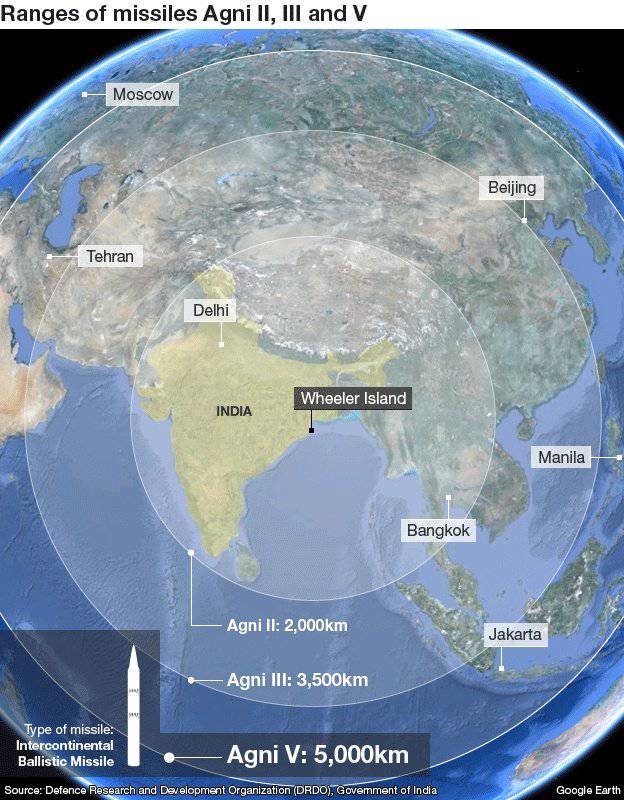
The successful tests of Agni-V, conducted by India 19.04.2012, allowed it to “break into” an elite club of countries that own ICBM technology (ICBM).
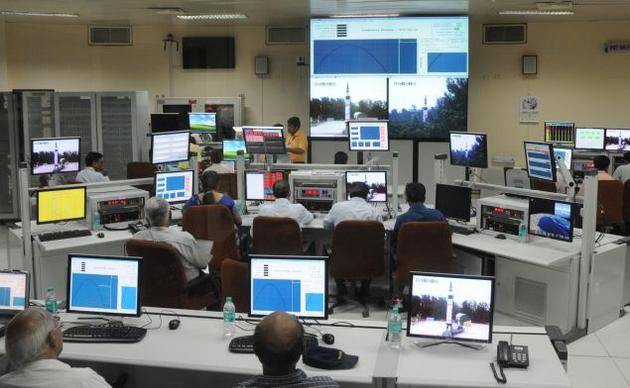
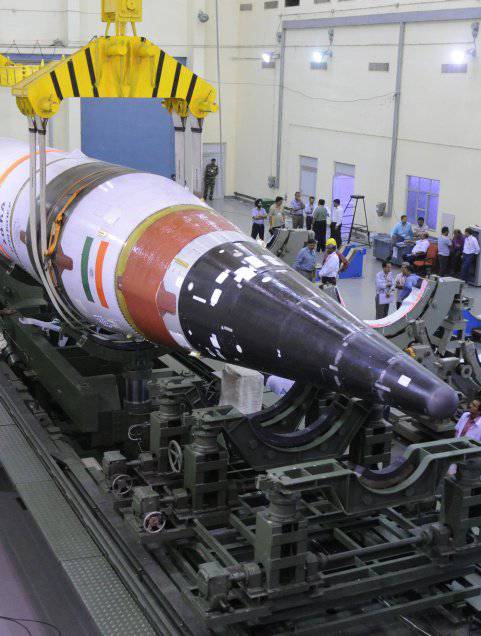
The local Indian press does not call the Agni-V ICBM other than "the killer of China."
"I brought you a fire (Agni), I could not otherwise!"
During the test launch, the 17,5-meter Fire-V reached an altitude of 600 km and a speed of 7000 m / s, which allowed the rocket to reach its intended range.
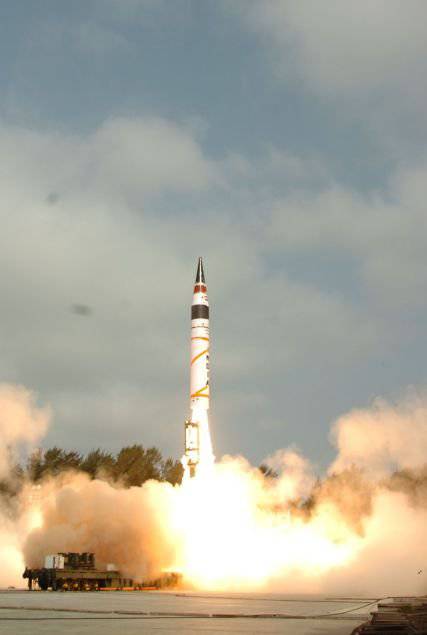
According to the website of the Federation of American Scientists (Britannica.com), the range of ICBMs is 5500 km and more.
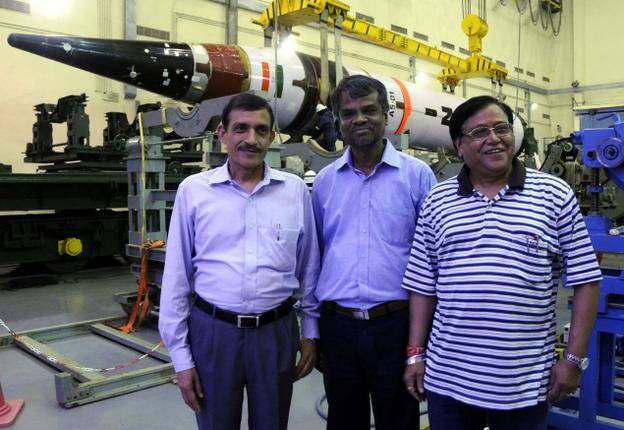
Avinash Chander Project Director (DRDO): India has missiles in its arsenal that can hit targets at a distance of 5000 km.

[/ b] Features of the BR (all solid fuel): [/ b]
Agni-I - PU: railway mobile (standard wide railway track), unpaved mobile PU (developed by VRDE DRDO from 2002, range 700 km), apogee 300-380 km (UE = 67 °), 185 km (UE = 45 º).
The mass of the payload can reach 1000 kg.
Agni-I body material - high-strength steel 15CDV6
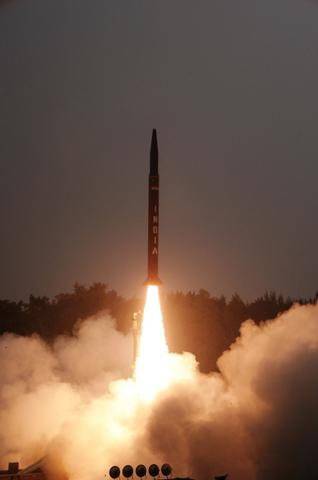
Agni-II range up to 3000 km, using a specific payload.
1 A stage with aerodynamic rudders (possibility of flying not along a ballistic trajectory) and cartridges with shunting solid propellant rocket motors.
2 Stage with Flex (sliding) nozzle nozzles, apogee 405 km, additional mini shunting LRE.
The body of the warhead is equipped with aerodynamic control surfaces for maneuvering when entering the atmosphere, consists of carbon-carbon composite materials, is lightweight and able to withstand high temperatures when returning to the atmosphere along various trajectories.
Agni-II body material - high-strength steel 15CDV6 (level 1 and 2). KP: Railway platform or mobile ground
Navigation: TDOA BIUS data bus: 1553 Data Bus (MIL-STD-1553)
A large amount of BO allows you to place the means to overcome the missile defense
With a warhead RV 750 kg according to some data, the range can reach 4000 km (Railway PU)
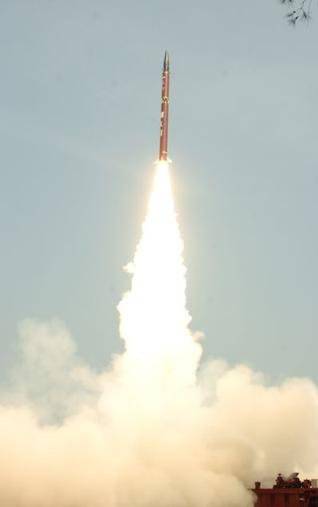
Agni-III, successor of Agni-II, heavier, longer range, high accuracy, smaller gabbarite in length, mobile
1 stage body carbon composite materials, 2 stage: martensitic-aging steel
CU - Agni RV-Mk.4, able to maneuver in dense layers of the atmosphere. Thermal protection withstands aerodynamic heating up to 6000 ° C at a speed of 5 km / s
Bangalore, 2011: Indian scientists have developed innovative technology that can increase the range of missiles and launch vehicles by at least 40%.
Agni III, capable of hitting targets 3500 km, and the new technology can increase the range to 4900 km.
These results were obtained using special chromium-based coatings for the cone of rockets and launch vehicles. The material acts as an ablative coating that forms a thin gas layer on the rocket fairing as it approaches hypersonic speed, this superheated low-density gas layer reduces resistance by 47% (with Mach number 7-8)
/ G Jagadeesh, Associate Professor at the Indian Institute of Science (IISc) May2008.
Modifications: SLBM K-4 (project KH) with a range of 3500 km.
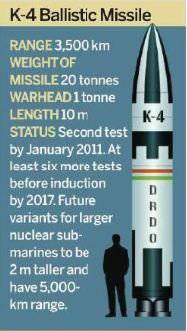
Agni -IV
Warheads -nuclear 15 KT to ~ 250 KT / 1 tn to 2,000Kg conventional, thermobaric.
Navigation, pointing: Ring Laser Gyro based Navigation System (RINS) Micro Navigation System (MINS) optional GPS / Glonas receiver with the ability to correlate the trajectory along the beam radar.
Studies are being conducted for Agni-IV control systems with the aim of hitting ballistic missiles (ABM)
Agni-V, on the Agni-III platform (60% subsystems), extensive use of the latest composites to reduce weight., to 600 new elements in the control system, the number of cables is significantly reduced, and the noise immunity is increased. MIRV-2, MIRV-3, MIRV-10 maneuver warhead units with maneuver, maneuvering, TTRD correction.
2-10 individual nuclear warheads.
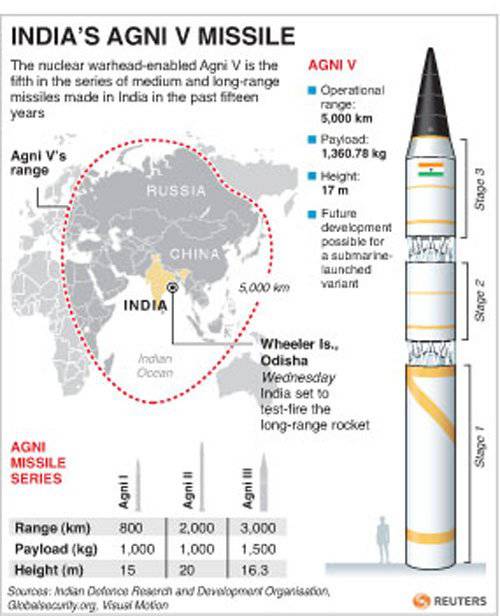
The term of adoption is the end of 2014 of the year or the beginning of 2015.
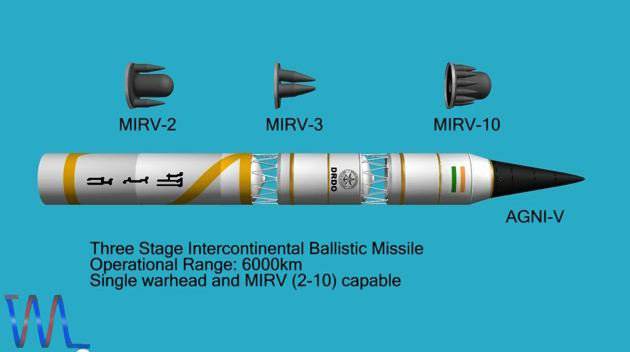
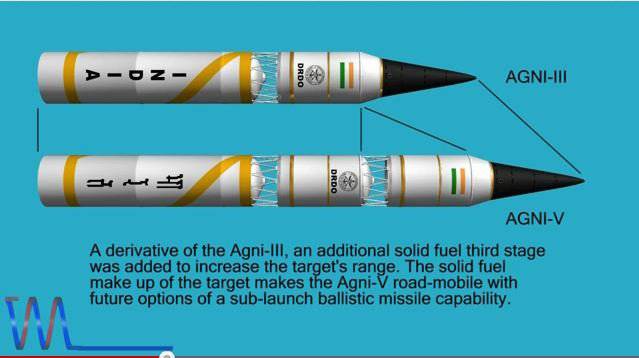
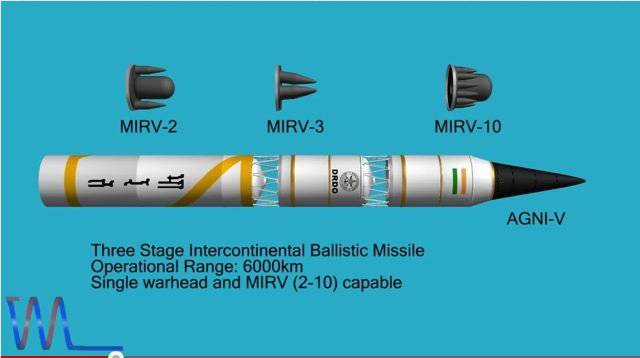
The United States cautiously approved missile tests in India. According to The New York Times
China Central Television (CCTV) listed some missile flaws and reported: "This missile is not a real threat."
Foreign Ministry spokesman Liu Weimin: "China and India are large developing countries. We are not competitors, but partners."
Agni-VI Modification of Agni-V SLBM, Project KH with Reelectric Warheads IN
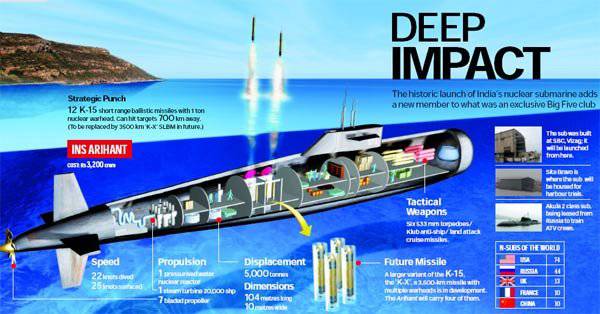
for Arihant class submarines (80 Mega Watt YASU) one of the А6 modifications (6000km) to replace further SLBM type K-15 (700km) Shourya / Sagarika
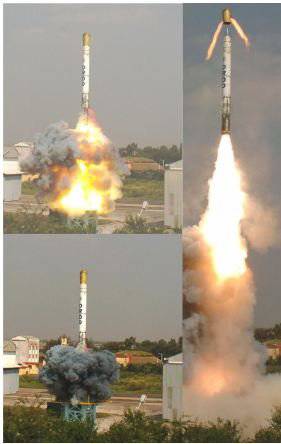
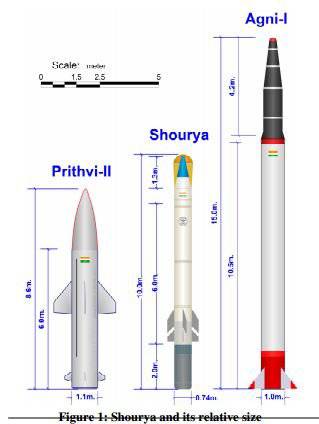
The Pioner (India), 2011 expressed doubt that DRDO will be able to independently develop an ICBM (BR Submarine) with a range of more than 10000km.
Rahul Dattan New Delhi: Russia is ready to share know-how with India, Russia has provided its advanced GLONAS system for the military purposes of India.
DRDO laboratories in the city of Chandigarh, a ballistics department, a research laboratory (OOI) developed a detonator that will initiate the detonation of the nuclear warhead for Agni-V.
Information:
India has not signed the Missile Technology Control Regime contract.
Chinese Deng Fong-31A MBRBD (ICBM) has a range of 11 500 km and can easily hit all of Asia and achieve goals in Russia and most of Eastern Europe.
- Postman
- DRDO Thursday the 19th April 2012 Wheeler Island, Odisha, India
- http://www.india-defence.com http://in.reuters.com http://www.hindustantimes.com http://www.thehindu.com http://www.ndtv.com http://drdo.gov.in http://www.dailypioneer.com http://www.youtube.com http://www.bharat-rakshak.com http://economictimes.indiatimes.com
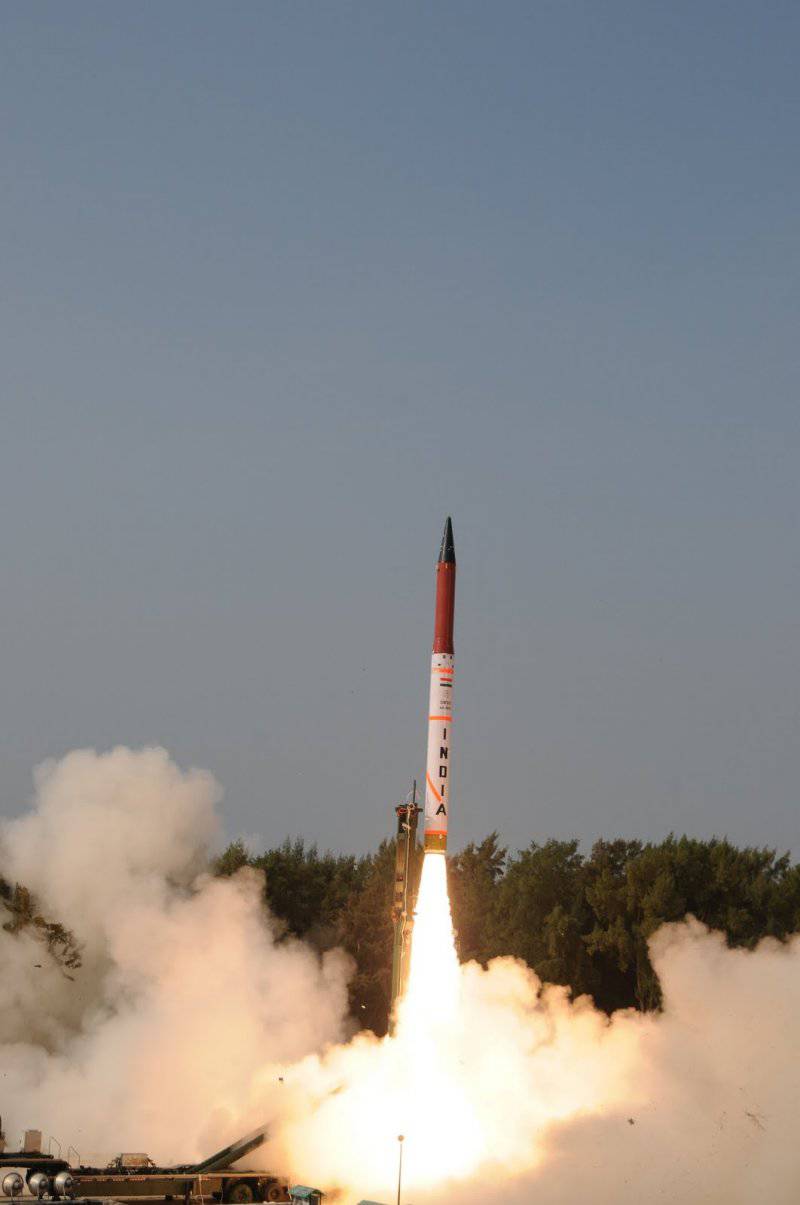
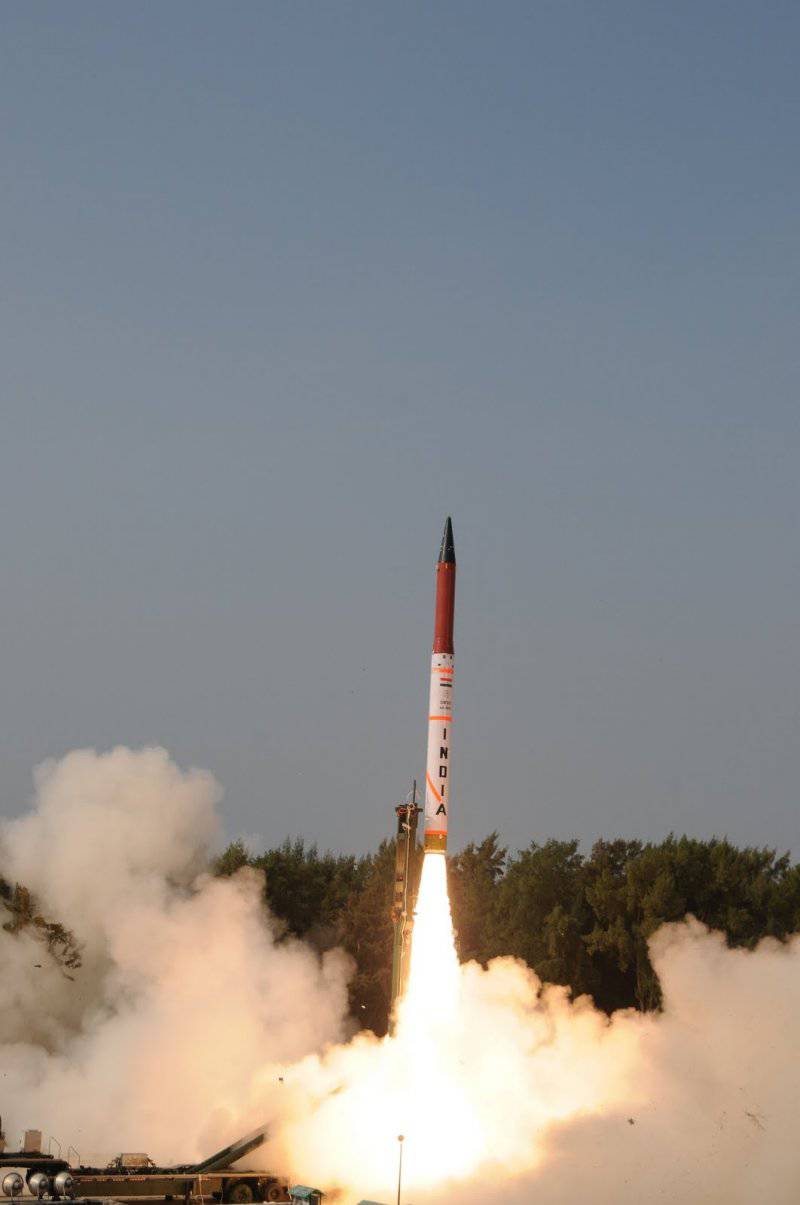
Information